The ancient story of goddess Lakshmi—bestower of power, wealth and sovereignty
Draped in red saree, bedecked with gold ornaments, seated on a lotus, pot in hand, flanked by white elephants, the image of Lakshmi adorns most Hindu homes and business establishments.
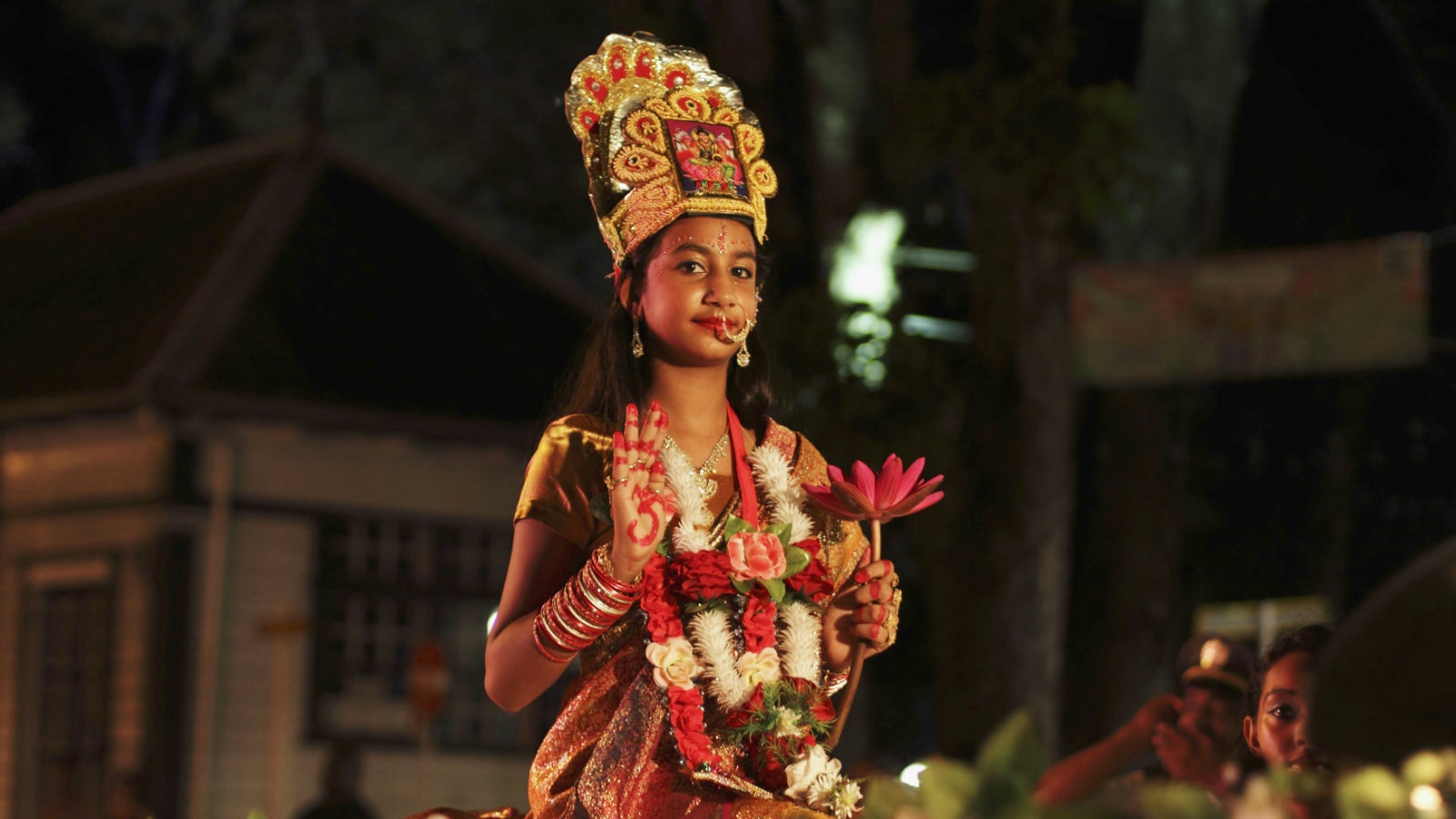

Draped in red saree, bedecked with gold ornaments, seated on a lotus, pot in hand, flanked by white elephants, the image of Lakshmi adorns most Hindu homes and business establishments.
Lakshmi is the goddess of wealth, fortune, power, luxury, beauty, fertility, and auspiciousness. She holds the promise of material fulfilment and contentment. She is described as restless, whimsical yet maternal, with her arms raised to bless and to grant. For centuries Hindus have invoked her thus:
Beautiful goddess seated on a chariot,Delighted by songs on lustful elephants,
Bedecked with lotuses, pearls and gems,
Lustrous as fire, radiant as gold,
Resplendent as the sun, calm as the moon,
Mistress of cows and horses —
Take away poverty and misfortune
Bring joy, riches, harvest and children.
The world may have changed, but the thirst for material comfort continues to form the core of most human aspirations.
Shri—the sacred name
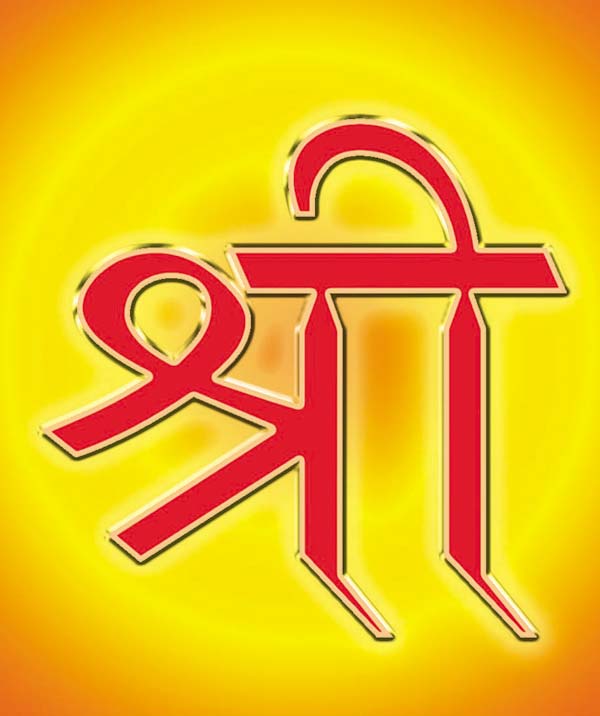
The popularity of Lakshmi can be gauged by the fact that her sacred name—Shri. Shri is written atop most documents and spoken before addressing a god, a teacher, a holy man or any revered individual. The word evokes amongst other things: grace, affluence, abundance, auspiciousness, authority.
When the word is spoken or written, an aura of holiness is established. Whatever follows the word is imbued with divine blessing. Married men and women are addressed as Shriman and Shrimati as they have Lakshmi’s blessings to harness the wealth of the world to support family and sustain society. Ascetics are not addressed as Shriman as they have renounced worldly riches; unmarried men and women are not addressed as Shriman and Shrimati as they are still in preparation for the householder’s life.
Just as the word ‘aum’ is associated with the mystical side of life, the word ‘shri’ is associated with the material side of existence.
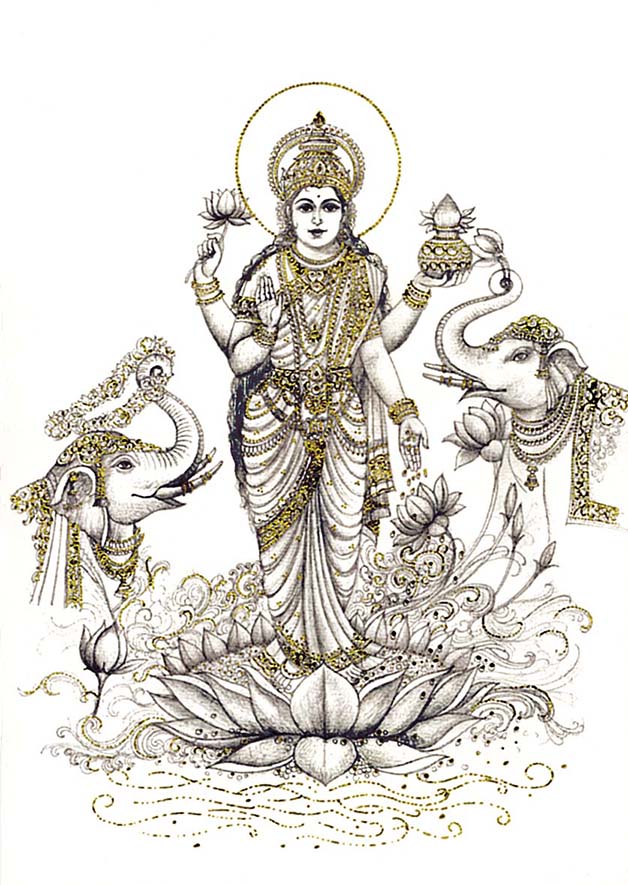
Widespread appeal
The practice of personifying the beauty and bounty of earth as a goddess was prevalent in all ancient cultures.
The Greeks had Core, the corn-goddess, who was known to Romans as Demeter. The Egyptians had Isis, Sumerians had Innana, Babylonians had Ishtar, Persians had Anahita and Vikings had Freia. Shri-Lakshmi is the Hindu form of the timeless mother-goddess who nurtures and nourishes all life.
In India, not only Hindus but also Buddhists and Jains adore Lakshmi. Buddhism and Jainism are primarily monastic orders that turned away from Vedic rituals and Brahmanical dogmas about 2,500 years ago. They, however, could not abandon this delightful goddess.
In the Buddhist Jatakas, there are tales of men and women who request the goddess Lakshmi to drive away the goddess of misfortune, Kalakanni. Images of Kubera, the pot-bellied yaksha-king and treasurer of the gods, who is closely associated with Lakshmi, adorn most Buddhist shrines.
In holy Jain texts, it is said when an exalted soul like a Tirthankara is about to be born his mother dreams of many auspicious things, including the goddess Shri. Symbols of wealth and royal power commonly associated with Lakshmi are auspicious to both Buddhists and Jains. These include: the pot, a pile of gems, a throne, a flywhisk, a conch, a fish, a parasol, nagas, yakshas, a footstool, a horse, an elephant, a cow, and the wish-fulfilling tree.
An ancient goddess
Shri-Lakshmi has a long history testified by the fact that her first hymn, the Shri Shukta, was added to the Rig Veda, the oldest and most revered of Hindu scriptures, somewhere between 1000 and 500 BC.
Considering her popularity amongst Buddhists and Jains, it has been proposed that her worship may predate the Vedic culture and may have developed independently before she was brought into the Vedic, Buddhist and Jain folds.
Scholars are of the view that initially the words Shri and Lakshmi referred to anything that was auspicious or brought good luck or bestowed riches and power. Later the two words were personified into two goddesses who eventually merged. Thus, Shri-Lakshmi came into being.
Fragmentary verses in the Shatapatha Brahmana, written not long after the Vedas, talks of the birth of Lakshmi from the mouth of Prajapati to provide the inhabitants of the cosmos food, clothing, shelter, and all things that make life more comfortable. She also offered wisdom, strength, beauty, luck, sovereignty and splendour—the good things in life.
Stories of Lakshmi first appeared in the epics Ramayana and Mahabharta, that were composed between 300 BC and 300 AD, a period that witnessed the waning popularity of Vedic gods and the rise of gods who offered moksha such as Shiva and Vishnu. Gods and demons fought over her and both strove to churn her out of the ocean of milk. As folk heroes such as Rama and Krishna were viewed as incarnations of Vishnu, their consorts Sita, Radha and Rukmini became increasingly identified with Lakshmi. In the Harivamsa, appendix to the Mahabharata, Manmatha, the god of love, lust and fertility, was described as her son.
The mythology of Lakshmi acquired full form in the Puranas, chronicles of gods, kings and sages that were compiled between 500 and 1500 AD. In them, the goddess came to be projected as one of the three primary forms of the supreme mother-goddess, the other two being Saraswati, the goddess of knowledge, and Kali or Durga, the goddess of power. Lakshmi was visualised both as an independent goddess and as Vishnu’s consort, seated on his lap or at his feet. Prithvi, the Vedic earth-goddess, became Bhoodevi in the Puranas and a manifestation of Lakshmi. In south India, the two goddesses were visualised as two different entities, standing on either side of Vishnu, Bhoodevi representing tangible wealth while Lakshmi or Shridevi representing intangible wealth. In north India, the two goddesses became one.
Images of Lakshmi started appearing around the third century BC in sculptures found in Kausambi, in north India, and on coins issued during the reign of the Gupta dynasty around the fourth century AD. She became a favourite of kings as more and more people believed she was the bestower of power, wealth and sovereignty. Separate shrines to Lakshmi within the precincts of Vishnu temples may have been built as early as the seventh century; such shrines were definitely in existence by the 10th century AD.

Fickle and independent
Nowadays, Hindus accept Lakshmi as the eternal consort of Vishnu, the preserver of the world. In her long history, however, the goddess has been associated with many other deities. According to Ramayana, Mahabharata and Puranas, the goddess Lakshmi first lived with the demons before the gods acquired her. She graced asuras such as Hiranayaksha, Hiranakashipu, Prahalad, Virochana and Bali, rakshasas such as Ravana and yakshas such as Kubera before she adorned the court of Indra, king of devas, the most renowned of Vedic gods. Cities of the asuras (Hiranyapura), yakshas (Alakapuri), rakshasas (Lanka) and nagas (Bhogavati) have all been described as cities of gold, Lakshmi’s mineral manifestation.
Within the Vedic pantheon, Lakshmi was linked with many gods, especially those associated with water bodies: Indra, the rain-god (bestower of fresh water); Varuna, the sea-god (source of all water); Soma, the moon-god (waxer and waner of tides). Indra’s wife Sachi was also known as Puloma, which is the name of an asura-woman suggesting entry of Lakshmi from the world of asuras into world of devas.
As the Vedic gods waned into insignificance around the fifth century BC, two gods came to dominate the classical Hindu worldview: the world renouncing hermit-god Shiva and the world affirming warrior-god Vishnu. Lakshmi was briefly associated with Shiva before she became the faithful consort of Vishnu-Narayana, the ultimate refuge of man. With Vishnu, she was domesticated. No longer fleet footed, she sat demurely by his side, on his lap or at his feet.
The association with many gods has led to Lakshmi being viewed as fickle, restless and independent. Sociologists view the mythology of Lakshmi’s fickleness as indicative of her cult’s resistance to being assimilated with mainstream Hinduism. Even today there is tension between the mythology of Lakshmi as an independent goddess and her mythology as Vishnu’s consort. Philosophers choose to view the fickleness and independence of Lakshmi as an allegory for the restlessness of fortune. More often than not, there are no rational explanations for fortune and misfortune. Good times come without warning and leave as suddenly.
Shri Vaishnava tradition
In the twelfth century AD, a new form of Vaishnavism called Shri-Vaishnavism evolved in South India. Like other Vaishnava orders, it visualised Vishnu as the embodiment of the supreme divine principle. However, this order was unique as it refused to acknowledge Vishnu independently. It insisted on the presence of Lakshmi beside him.
For Shri-Vaishnava scholars, such as Vedanta Deshika, Lakshmi is indispensable while approaching Vishnu. He represents righteousness; she represents compassion. She is like a mother intervening between a stern father (God) and an errant son (the devotee).
Maha-Lakshmi, the great goddess
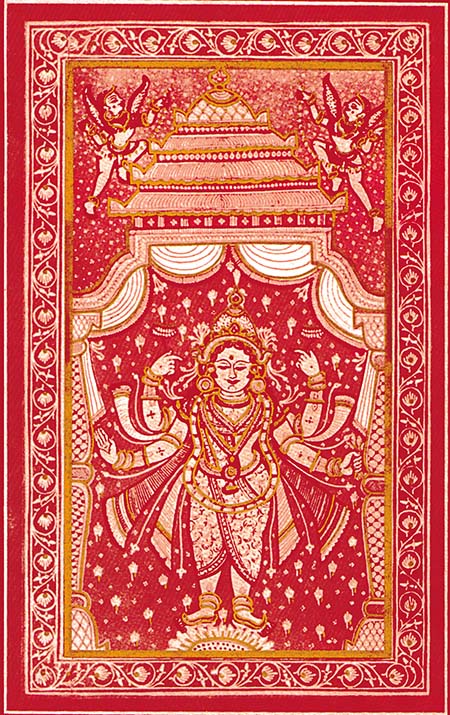
In Tantrik texts, which were composed around the same time as the Puranas, Lakshmi acquired supreme importance. She was Maha-Lakshmi, the supreme goddess.
Lakshmi is often differentiated from Maha-Lakshmi. While the former is the consort of Vishnu and the goddess of wealth, Maha-Lakshmi is viewed as an autonomous entity, the supreme embodiment of the mother-goddess. When worshipped as Maha-Lakshmi, Lakshmi is not visualised as a beautiful goddess seated on a lotus, pot in hand, but like a virginal warrior-goddess riding a lion, much like Durga. This form of the goddess is especially popular in Maharashtra.
Ancient Pancharatra texts that adore Maha-Lakshmi consider her to be the root of all creation. In the beginning, they say, the cosmic soul—the unfathomable unmanifest Narayana—desired to create the cosmos. But he did not have the resources to do so. As he pondered over this problem, his dormant energy, his shakti, burst forth in a blinding light, manifesting as Maha-Lakshmi.
Maha-Lakshmi placed the seed of divine desire in the palm of her hand and unleashed the dynamic forces of creation until the three worlds took shape and all forms of life came forth.
In the Lakshmi Tantra, the goddess says: “I am inherent in existence. I am the inciter, the potential that takes shape. I manifest myself. I occupy myself with activity and finally dissolve myself. I pervade all creations with vitality, will and consciousness. Like ghee that keeps a lamp burning, I lubricate the senses of living beings with the sap of my consciousness.”
Lakshmi is the divine power that transforms dreams into reality. She is prakriti, the perfect creation: self-sustaining, self-contained Nature. She is maya, the delightful delusion, the dream-like expression of divinity that makes life comprehensible, hence worth living. She is shakti, energy, boundless and bountiful.
To realise her is to rejoice in the wonders of life.
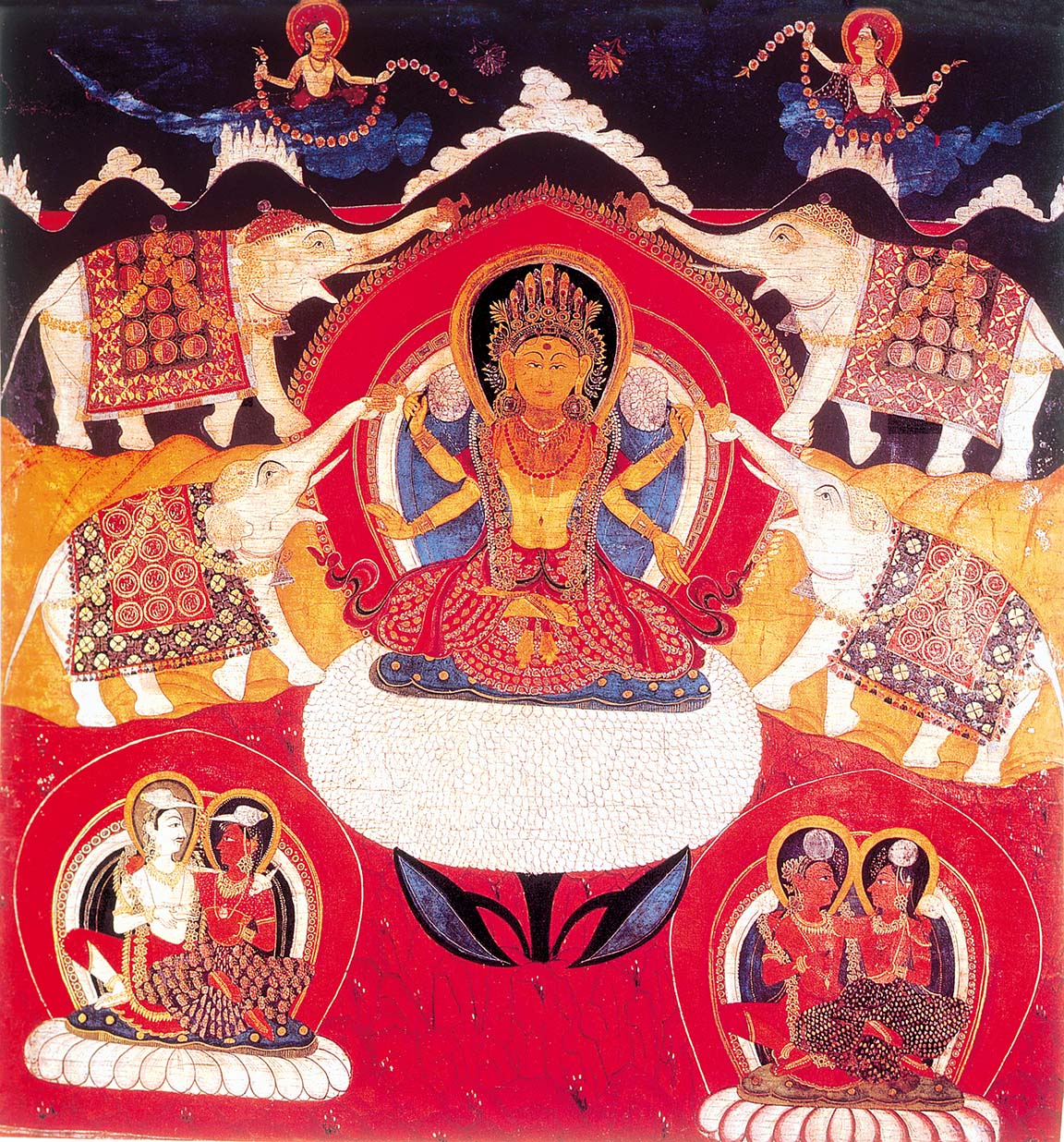
Excerpted with permission from Vakils, Feffer & Simons from the book Lakshmi: The Goddess of Wealth and Fortune – An Introduction authored by Devdutt Pattanaik. We welcome your comments at [email protected].